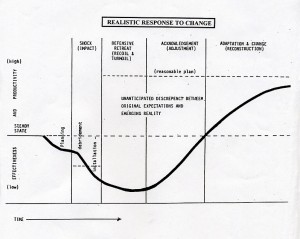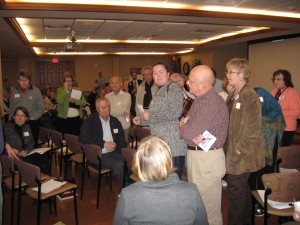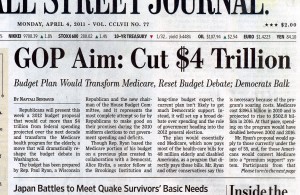#363 – Dick Bernard: The Tyranny of "Circles"
Back in the 1990s I participated in a workshop in which one of the activities was to identify the “circles” of which I was a part.
It was surprising to learn how many circles, and thus associations, I really had. These circles would include groups like “family”, “church”, “work”, “political party” and on and on and on.
As part of the exercise we identified individuals we knew in each of these circles. Potentially there were a lot of people.
I drew a rough graphic of the circle exercise:

In more recent times I’ve had occasion to revisit this business of “circles”, and it is distressing what I seem to see.
Even in the relatively short time period since the 1990s I have noted an occurrence which is, ultimately, very dangerous to our very survival as a society.
As our world has become more complex, and our country more politically polarized, I am finding that people of all persuasions are retreating into ever smaller and more limited and thus mal- or mis-informed “circles”. I’d call the phenomenon the “I can’t deal with it” response, “it” being some other point of view. People retreat into their belief or absolute interpretations of what they consider ‘truth’, often with little or no evidence to support their position.
They figuratively fight to the death to make sure that their point of view ‘wins’, whether it makes sense or not.
A society such as I describe has relatively little chance of enduring short or long term.
Examples abound.
As I write I think back to the terrifying times of Y2K in the later months of 1999.
There was almost hysteria, then, about the probability that computer clocks would end at midnight on December 31, 1999, and our world would descend into chaos. Even then, computers were omnipresent, though nowhere near what we experience in today’s world.
Of course chaos didn’t ensue when midnight first struck late at night somewhere in the Pacific January 1, 2000. By then lots of people made lots of money fixing those computer clocks; I doubt that anybody really knows whether there would have been chaos without the fix, but that is how hysteria works….
I remember particularly two vignettes from that time period – vignettes that I think are instructive in the present day.
A short distance to the east of where I write, in a Wisconsin border town, a story was published about a survivalist couple who lived in a regular house in the town and were preparing for dooms day: generators, bottled water, you name it. They were ready for the literal millenium they were certain was coming.
I thought to myself, then, what if their worst case scenario actually happened? How safe would their stash be, regardless of how ‘armed and dangerous’ they made themselves. They were simply a tiny little island in a mass of humanity. A hugely vulnerable ‘circle’ unto themselves. They would have been overrun by the local rabble.
On December 31, 1999, I recall a friend of mine telling about her flight (literal, in an airplane) from here to California to beat Y2K. It didn’t dawn on her till somewhere over the western U.S. that midnight happens at different times in different places around the globe. To what time zone was her planes computer clock set…?
She landed safely.
There are those, now, who think that they have control and can manipulate the future because of their particular means of domination.
They should not rest easy.
Neither should we, particularly if we can survive by ourselves, or with our hand-picked tiny ‘circle’.
We live together, or we collapse.





